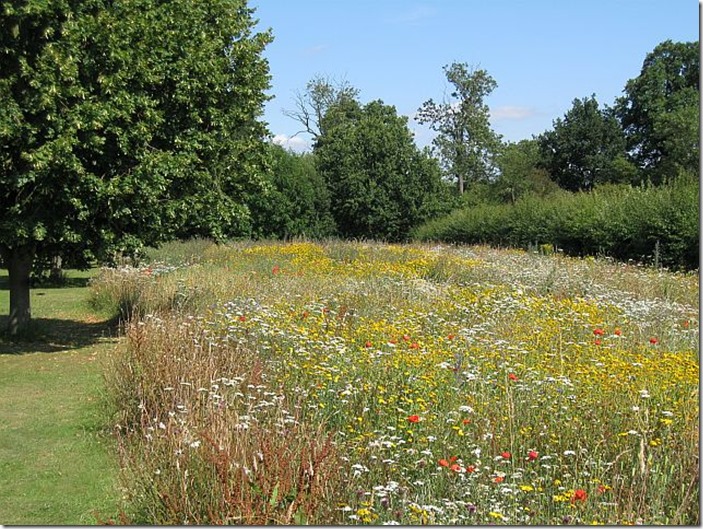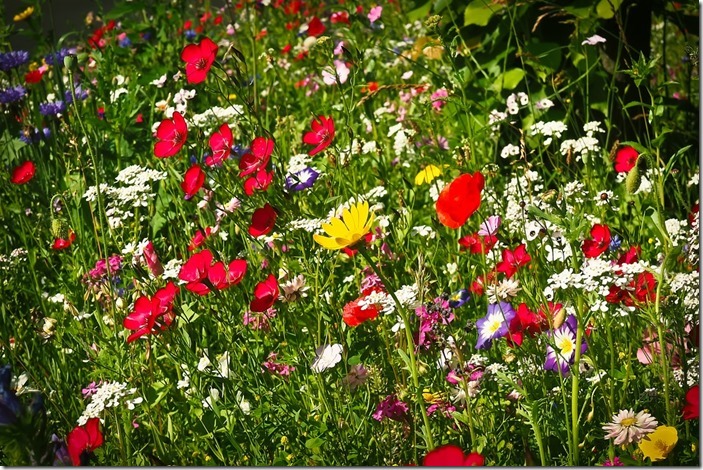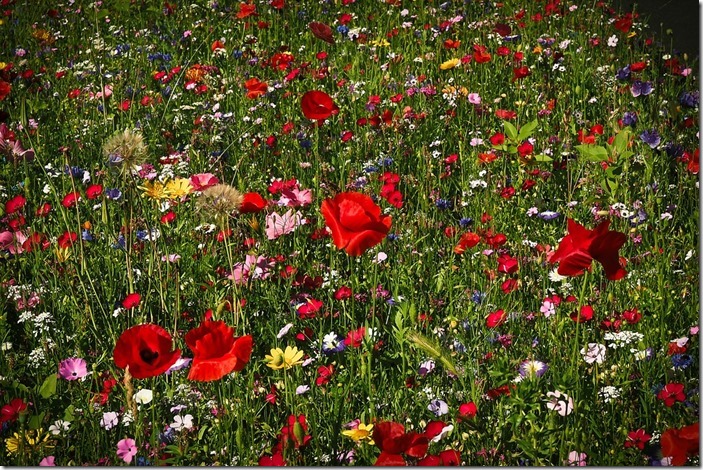
Design Ideas – Taking the Rough with the Smooth
Rough grass is an immensely useful tool for the garden designer. How is it defined? It is simply grass that has been allowed to grow taller than adjacent smooth lawn grass, or that may already exist as paddock or naturally occurring grass in a virgin plot. Cut a few centimetres above a tightly mown lawn it allows you to reinforce strong geometric curves in a ground plan, contouring and sculpting the surface and rendering the flow and rhythm of the pattern highly visible. The rough grass accentuates the velvety smoothness of the mown areas.
In large gardens – and even in moderately-sized plots – areas of boldly delineated rough grass provide loads of possibilities without the expense of covering large areas with plants and deciding what these should be. You can make strong design statements in a number of ways, some of which are suggested below. By thinking outside the parameters of the traditional lawn you can unleash all kinds of ideas, from mazes and labyrinths to swathes of meadow grasses, a setting for naturalistic plantings of spring bulbs such as narcissus, or a planting of bright tulips in a formal, regimented pattern. It works and you are still being economical in your plantings!
As so often in successful planting schemes the tightly controlled is set next to the relaxed, loose, even floppy. The tension between the two styles creates the dynamic. Landscape architects and designers such as A E Bye, Charles Jencks and Ian Hamilton Finlay display sensitive and inspirational understanding of the role of rough grass in their landscaping schemes.
You can explore other simple opportunities for designing the rough next to the smooth. A simple circle of rough grass can be the setting for a standing stone, a piece of sculpture or a bench, from which to observe the insects enjoying, feeding and sheltering in the longer, shadier grasses. I’ve found that in my garden invasive, creeping, meadow buttercups dominate some rough grass areas from time to time but that’s fine – in full bloom I have a sea of golden yellow flowers and in quieter times just a green mass of leaf textures that are different from, but complementary to the grass.
Select specific grasses for a particular effect over an entire planned area of rough grass. Some will provide a soft haze of pink flower heads, others brown or creamy flowers. All can be mown quite tightly after flowering, which is necessary to ventilate the roots and soil.
However large or small your areas of rough grass they are contained and defined by the action of the mower, which outlines whatever shapes you choose to design, whether serpentine curves, circles, triangles, squares or rectangles. Taking the notion a step further and if the garden or plot is spacious enough you could equally well fill these shapes with low ground cover, different varieties of grass, wild flowers or whatever you want that will remain low, dense and ground-hugging, or that can be mown to a height of approximately ten to twelve centimetres.
Paths can be mown through larger areas of grass, but not through planted areas, to echo and reinforce the rhythms of the ground pattern.
In more casual grassy areas, which will probably be some distance from the house, just allow the natural succession of plants through spring and into high summer, mowing only if necessary or as the longer grasses mature. In late September all can be mown short, removing any thatch and ideally aerating with the tines of a fork.






